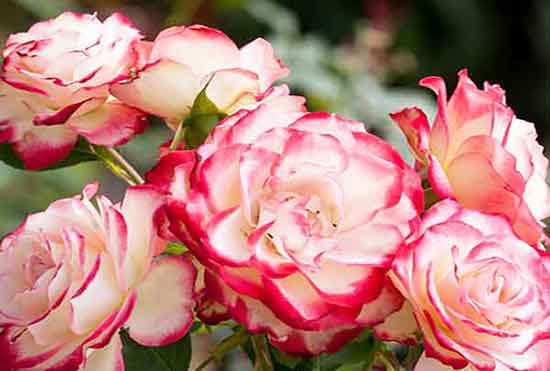- Home
- Paint a Rose
- Rose Care
Master the Art of How to Care for Roses
For the rose enthusiasts, let's talk about how to care for roses.
Growing roses is a rewarding experience. They are outstandingly in our gardens. And a fragrant rose in our living area can add a touch of romance to our daily life.
Let's look at the best methods to ensure your roses bloom and rebloom vibrantly for many years.
 Beautiful roses are inspiring subjects for the artist.
Beautiful roses are inspiring subjects for the artist.A Comprehensive Guide on How to Care for Roses
Growing roses is easy with just a few simple guidelines. Everyone can grow roses.
- What are the popular Types of Roses?
- What Do Roses Need?
- How do we Plant a Rose?
- How to Care for Roses and do roses need Pruning?
- What about Pest Control and Seasonal Rose Care?
Soon you will have America's national flower flourishing in your garden!
the Joy of Rose Gardening: exploring rose types
Select roses depending on how we intend to use them in the landscape.
We may want to feature them as specimen plants, climbing on an arbor or in containers on the patio.
Look for blooming roses. We want to see the colors, forms and enjoy their fragrances.
Hybrid
Tea Roses
Hybrid teas are known for their large flowers on a long stem. They have one flower per stem.
 Hybrid tea rose
Hybrid tea roseThese are the cut flowers used in the florist industry.
Their flowers are large with a high center and many petals. More petals mean longer lasting blooms.
Many have a wonderful fragrance from the original tea roses. They flower early in the summer and then sparsely the rest of the season.
They are very effective as specimen plants in the landscape. They may grow from 3 to 6 feet.
Generally, they are not as disease resistant as many other rose bush types. So, they require attentive care.
But they are gorgeous!
Floribunda
roses
 Floribundas have a cluster of flowers.
Floribundas have a cluster of flowers.Floribundas have many loose-formed, smaller flowers on the end of the stem.
They are more robust and hardier which make them perfect for beginners.
The center flower blooms first. Then the side flowers open later giving an extended bloom time.
They are colder hardy than hybrid tea roses. They are continual blooming, from summer until frost.
The abundance of flowers and lower growing plants make them useful as hedges.
They are generally are 2 to 4 feet tall. Plus, they are known to be easier to take care of than the hybrid tea roses.
Grandiflora
Roses
 Grandiflora roses have showy flowers.
Grandiflora roses have showy flowers.Grandiflora Roses were developed by crossing the hybrid teas with the floribunda roses.
They have the larger flowers of the hybrid tea rose. Some have a wonderful fragrance from the tea roses.
They have the hardiness and numerous flowers of the floribunda rose.
Queen Elizabeth was the first grandiflora to be registered in 1954. It's hard to find a more regal flower with its shell pink color.
Today there are many wonderful grandifloras. They are an excellent choice for home rose growing and they are very rewarding.
They grow from 3 to 5 feet, occasionally taller.
other
rose types
Climbing roses are popular for growing on fences, arbors or a trellis. Their long arching canes may grow up to 15 feet long. They need to be tied up to their support.
In harsh winter climates, lay the canes on the ground and cover them for winter protection. The next spring put them on their supports again.
Miniature roses look much like a hybrid tea or floribunda roses. Miniatures are great for low growing hedges or growing in pots. Under most conditions they grow from 1 to 2 feet tall.
Knockout roses have greatly simplified how to care for roses! They are extremely disease resistant. They do not require deadheading of their spent flowers.
They bloom all season long from spring until frost in waves of flowers about 6 weeks apart.
They grow to around 3 to 4 feet tall and wide and may be used in the landscape like a shrub.
What Do Roses Need?
The correct location for our roses is one of the most important aspects of how to care for roses.
 Roses have amazing variations.
Roses have amazing variations.Where should we plant our roses? Finding the ideal spot for roses involves much more than what looks good.
Roses are robust plants that can adapt to a range of conditions. However, we want to provide them with the best possible growing conditions.
Light, soil, air and water requirements define the success of our roses.
roses love the sun
Roses need at least 5-6 hours of sunlight for strong growth and good flowering. They are delighted with 8 hours of full sun.
The most common reason roses don't flower and grow well is because they don't have enough sunlight.
Roses can tolerate some shade, but insufficient light can make them susceptible to diseases and poor flowering.
There are some roses that will grow in shady locations, but not many. Don't plant a rose in the shade, unless it is specially bred and labeled as a shade rose.
what is the best soil for a rose?
The soil is another critical factor to consider when we choose the spot for our roses.
 Wonderful roses
Wonderful rosesRoses can adapt to most soil types, but they prefer a nutrient rich soil.
If our garden soil is clay or sand, we can improve it by adding compost or other organic matter.
Roses need well drained soil.
Choose a spot with good drainage. Water-logged soil can lead to root diseases and possible demise of the rose.
Rose roots will grow down to 24" to 36". We want to make sure the roots are not rotting in water.
We can check the soil drainage by digging a hole about a 12" wide and 18" deep. Fill the hole with water and let it drain completely away. This wets the dry soil.
Then fill the hole with water a second time. Many times, the hole will drain out in 10 to 30 minutes. Ideally the water will drain within an hour, 3 to 4 hours at the most.
What if the soil doesn't drain well?
There several options for drainage situations. Where there is a will, there is a way to grow roses.
- Amend the soil with organic matter.
- Plant in a raised bed.
- Plant the roses in containers.
air circulation
Good air circulation is the key to preventing leaf diseases on our roses.
Plant roses at least three feet apart, four feet apart is best.
When we are planting roses against a building, plant them far enough away for good air circulation. Plant the rose a minimum of 1/2 its mature diameter away from the building.
Water roses in the morning. Then the air circulation has time to dry the leaves before night time. This helps prevent leaf diseases.
A Comprehensive Guide on How to plant Roses
Knowing how to plant a rose affects the long-term
health and vitality of our roses. Attention to detail gives our roses a good start.
Whether we are planting a rose from a container or bare root, the steps are much the same.
 Let's plant our roses.
Let's plant our roses.when is the best time to plant a rose?
Spring is the best time to plant a rose.
Wait until after the last frost and then plant your roses. Roses planted from a container may be planted all the way up into May. They need to get a good start before the heat of the summer.
Bare root roses should be planted as soon as we can comfortably work the soil, like February or March. They take longer to establish. It's not safe to plant bare root roses in the late spring.
Roses may be planted in the fall six to eight weeks before the first frost. They need time to establish before cold weather. It depends on the plant zone where we live.
how to plant a rose from a container
The first tip on how to care for roses is to select clean, strong, healthy plants.
Do not buy plants with roots hanging out of the bottom of the pot or poking out the top of the soil.
 Select healthy roses
Select healthy rosesBefore planting, water the rose well in the container.
A good hole is a necessity for growing healthy roses.
Dig the hole before taking the rose out of the container.
- Dig the hole two feet wide and about twice the depth of the container.
- Dig the sides of the hole straight up and down.
- The hole will be the same width at the bottom and top.
- Amend the soil that will be going back into the hole with plenty of organic matter.
The organic matter not only provides nutrition, but it loosens the soil. It gives the roots room to breathe and get the oxygen and moisture they need.
We may put a bit of time released fertilizer into the bottom of the hole.
Cover the fertilizer with a little soil. The roots will get the fertilizer when they grow to it.
Take the rose out of the container only after the hole is prepared.
If the small feeder roots are exposed to the air for any length of time, they will dry up and die.
 Firm the soil around the rose.
Firm the soil around the rose.If there are roots going around in the bottom of the container, gently straighten them out.
- Set the rose plant into the hole the same depth it was in the container.
- Fill around the rose 1/2 way up with the amended soil.
- Then fill the hole to the top with water. Let it soak away and water again to moisten all the dry soil.
- Now, finish filling the hole to the top with soil. Firm the soil down with your hands.
- Water the rose again to settle the soil and fill any air-pockets.
Mulch may be applied around the base of the rosebush. It helps conserve
water, regulate soil temperature, and suppress weed growth.
how to plant a bare root rose
If we see dead or broken roots, they should be removed. Put the bare root rose into some room temperature water for a couple of hours to make sure it is well hydrated.
 Ready to plant
Ready to plantFirst, dig the planting hole the same as for a container rose.
Second, make a mound of amended soil in the bottom of the planting hole.
- Set the rose into the hole and spread the roots down over the mound of soil.
- The bud union, the swollen part of the stem should be at or above the soil surface.
- Add amended soil about half-way up in the hole and water thoroughly.
- Fill the hole the rest of the way up to the level the rose was planted before.
- Firm the soil down with our hands to make sure there are no air pockets.
- Water again and apply mulch.
Do not fertilize the bare root plant until we see good growth on the rose.
Top Tips on How to Care for Roses
The rose planting is finished, now
we need to know how to take care of our new rose.
Food and water are the keys to their long life and beautiful blooms.
how often do we water roses?
Rose care includes regular watering. How much to water depends on the site and soil conditions.
Depending on weather conditions, a thorough watering once or twice a week may be enough. Generally speaking, roses use more water during the hotter months.
Once our roses are established, they are very drought tolerant.
- Check them about once a week to see if the soil is dry.
- Water deeply at the base of the rose with about 1" of water. Watering at the base of the plant helps prevent leaf diseases.
- If we water by sprinklers, do is early in the day so the leaves dry before night. Wet leaves at night encourage the growth and spread of leaf diseases.
Mulch around the roses will help retain soil moisture and provide additional nutrients as it breaks down.
As roses grow and mature, their water and nutrient requirements may change.
Keep an eye out for any signs of distress, like wilting or discolored leaves, and adjust your feeding or watering habits accordingly.
 A lovely climbing rose
A lovely climbing roseFertilizing Roses
Providing roses with proper nutrition is essential to vibrant, healthy plants.
- Roses that bloom once a year are fertilized once a year, early in their growing season.
- Roses that flower all summer are fed about monthly during their growing season.
- Start feeding roses in early spring when the leaf buds begin to swell.
- Fertilize the last time around Labor Day, so the new growth hardens off before winter.
Apply the fertilizer at the leaf drip-line.
The feeder roots that pick-up water and nutrients are out at the drip-line.
Use a rose food or a general fertilizer such as a 5-10-5. Remember to follow the directions on the label about how much to apply.
Never fertilize a dry plant. If the rose is dry, water it and fertilize it the following day.
pruning: Keep Your Roses Blooming
Deadheading is how to care for roses and get more flowers, more often.
It's simple pruning done throughout the flowering season. It removes the spent flowers that are withering
and past their peak appearance.
How
to deadhead roses

Cut just above a five-leaflet leaf. Don't cut to a three-leaflet or the resulting growth will be weak and spindly.
Prune to an outward facing bud, so the new growth will go outward instead of toward the interior of the bush.
Cut about 1/4" above the leaf axial. Cutting too close to the leaf axial will injure the new bud.
If you leave too much stem above the axial, there is a chance the cane will die back.
The flower in the photo is not actually ready to be trimmed off. But it makes a nice picture.
Only deadhead the spent blossoms. This is how to care for roses.
Knockout roses do not require
deadheading their spent flowers. This greatly simplifies rose care.
seasonal pruning
Pruning rose bushes controls the shape, size and health of the rose plant.
It helps improve air circulation, which reduces the risk of diseases. It results in healthy new growth with more and larger flowers.
When
is the best time to prune roses?
Pruning is best done in the early spring when the buds are swollen, but not leafed out.
how do we prune roses?
Cut off all dead, damaged, diseased, crossing canes and skinny ones that won't hold up large flowers.
Prune to three to seven strong, evenly spaced canes that will allow plenty of light and air into the center of the plant.
Prune for shape and size. Normally 1/3 to 1/2 half of the height is removed to keep the rose a manageable size.
- Cut about 1/4" above outward facing buds.
- Angle the cut away from the bud to prevent water from settling down into the bud.
Shrub roses are pruned to keep them in their allotted space, full and natural looking. Normally reduce their height by about half each spring.
Knock Out roses are pruned in the spring before they leaf out, cut back about one third to keep them at a nice manageable size of 3 to 4 feet.
Miniature roses are pruned to about half their height. Leave about six canes, while shaping the plant during the spring pruning.
Climbing roses are pruned after they have bloomed. Many climbers bloom on last year's growth. If they are pruned first thing in the spring their flower buds will be cut off.
It's important to use sharp tools to make clean cuts.
If we cut diseased canes, disinfect the pruning tool after using it. This is how to care for roses and prevent spreading the disease.
the Art of How to Care for Roses Effectively
The best way to control pests and diseases is to keep the roses healthy.
Common things that may attack roses are aphids, spider mites, black spot and powdery mildew.
 Climbing roses are appealing.
Climbing roses are appealing.Aphids are weak. If we wash them off of the plant with a stream of water, they are not strong enough to climb back up. Ladybugs like to eat aphids.
Spider mites can also be controlled with water sprays or neem oil.
Fungus diseases like black spot and powdery mildew often result from wet leaves and poor air circulation. So, avoid wetting leaves when watering and plant and prune to increase air circulation.
Diseases can overwinter in leaf debris. So, we remove any leaves from around the roses before winter.
What else can we do?
Occasionally we may get either bugs or leaf diseases. There are rose fertilizers that includes a systemic pesticide and fungicide with the fertilizer.
The systemic pesticide is taken into the plant through the roots. It then works from the inside of the plant out to control the pests and diseases.
Then when the critters bite the plant, they eat the pest control. It eliminates the necessity of spraying the top of the plant and simplifies how to take care of roses.
Be sure and follow the directions on the pesticide container.
Remember: A healthy rose is the best defense.
Keeping our roses healthy and vibrant makes them less attractive to pests and diseases.
Planting resistant varieties is also a proactive solution.
How to Care for Roses through the seasons
Each season has a different requires unique care.
During the summer, the main task is to water adequately and regularly. Mulching to conserve soil moisture and minimize water evaporation is also necessary.
Monitor for pests and diseases regularly as these are more active in the summer.
 Enjoying the season of rose hips.
Enjoying the season of rose hips.As fall rolls in, you might want to leave the last blossoms of the season to form hips. They signal the rose to begin winding down and prepare for winter.
Slow down watering, but do not stop entirely.
A good rule of thumb is to stop fertilizing after Labor Day. But depending on where you live, stop fertilizing six weeks before the first expected frost.
This allows time for the growth to harden off before winter.
But keep watering until the ground freezes so the roses stay hydrated.
winter rose care
In a colder climate protecting your roses becomes especially critical. The goal of winter protection is to shield your roses from the severe cold and damaging winter winds.
A popular method of winter protection for roses is to mound soil or compost over the base of the plant, approximately 10–12 inches high. An additional layer of straw or mulch can also be applied for extra insulation.
Any tall or climbing roses should be securely tied and wrapped with burlap for protection against harsh winter winds and storms.
If possible, we may remove climbing roses from their support, lay them on the ground and cover them for protection.
Once the danger of severe frosts is over, uncover the plants to allow new growth. Ensure that the roses are properly watered as the weather transitions from winter to spring.
Appropriate seasonal care will provide you with the joy of beautiful, healthy roses.
growing roses is incredibly fulfilling
This guide on how to care for roses provides tips for a flourishing, blooming rose garden.
The beauty and elegance they bring makes every effort worth it.
As you continue your rose gardening journey, be sure to explore further resources and tips available on our website.
enjoy growing and painting your beautiful roses!
Recent Articles
-
How Do We Paint Good Art?
 You can create good art with the big three!
Understand how to paint good art with your composition, values and color choices.
These three things create diverse and captivating artwork!
You can create good art with the big three!
Understand how to paint good art with your composition, values and color choices.
These three things create diverse and captivating artwork! -
How to Paint a Dog
 It's easy to paint this fun dog on canvas.
A step-by-step dog painting with professional techniques on how to use oil paints.
This dog painting tutorial uses only 3 colors.
It's easy to paint this fun dog on canvas.
A step-by-step dog painting with professional techniques on how to use oil paints.
This dog painting tutorial uses only 3 colors. -
Ideas for Your Home Art Studio
 Get your creativity flowing with your own art space. Where would be a good place to put your art studio and what should you put it? What's the best light for painting? What about supplies and furnitur…
Get your creativity flowing with your own art space. Where would be a good place to put your art studio and what should you put it? What's the best light for painting? What about supplies and furnitur… -
The Steps on How to Paint a Painting
 You will amaze your friends when you know how to paint a painting.
Learn the basic steps of painting a picture.
Get the important guidelines for painting with watercolors & oils.
You will amaze your friends when you know how to paint a painting.
Learn the basic steps of painting a picture.
Get the important guidelines for painting with watercolors & oils.
Recent Articles
-
How Do We Paint Good Art?
 You can create good art with the big three!
Understand how to paint good art with your composition, values and color choices.
These three things create diverse and captivating artwork!
You can create good art with the big three!
Understand how to paint good art with your composition, values and color choices.
These three things create diverse and captivating artwork! -
How to Paint a Dog
 It's easy to paint this fun dog on canvas.
A step-by-step dog painting with professional techniques on how to use oil paints.
This dog painting tutorial uses only 3 colors.
It's easy to paint this fun dog on canvas.
A step-by-step dog painting with professional techniques on how to use oil paints.
This dog painting tutorial uses only 3 colors. -
Ideas for Your Home Art Studio
 Get your creativity flowing with your own art space. Where would be a good place to put your art studio and what should you put it? What's the best light for painting? What about supplies and furnitur…
Get your creativity flowing with your own art space. Where would be a good place to put your art studio and what should you put it? What's the best light for painting? What about supplies and furnitur… -
The Steps on How to Paint a Painting
 You will amaze your friends when you know how to paint a painting.
Learn the basic steps of painting a picture.
Get the important guidelines for painting with watercolors & oils.
You will amaze your friends when you know how to paint a painting.
Learn the basic steps of painting a picture.
Get the important guidelines for painting with watercolors & oils.





